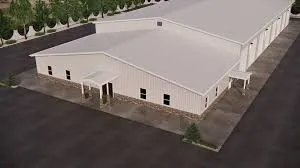- Afrikaans
- Albanian
- Amharic
- Arabic
- Armenian
- Azerbaijani
- Basque
- Belarusian
- Bengali
- Bosnian
- Bulgarian
- Catalan
- Cebuano
- Corsican
- Croatian
- Czech
- Danish
- Dutch
- English
- Esperanto
- Estonian
- Finnish
- French
- Frisian
- Galician
- Georgian
- German
- Greek
- Gujarati
- Haitian Creole
- hausa
- hawaiian
- Hebrew
- Hindi
- Miao
- Hungarian
- Icelandic
- igbo
- Indonesian
- irish
- Italian
- Japanese
- Javanese
- Kannada
- kazakh
- Khmer
- Rwandese
- Korean
- Kurdish
- Kyrgyz
- Lao
- Latin
- Latvian
- Lithuanian
- Luxembourgish
- Macedonian
- Malgashi
- Malay
- Malayalam
- Maltese
- Maori
- Marathi
- Mongolian
- Myanmar
- Nepali
- Norwegian
- Norwegian
- Occitan
- Pashto
- Persian
- Polish
- Portuguese
- Punjabi
- Romanian
- Russian
- Samoan
- Scottish Gaelic
- Serbian
- Sesotho
- Shona
- Sindhi
- Sinhala
- Slovak
- Slovenian
- Somali
- Spanish
- Sundanese
- Swahili
- Swedish
- Tagalog
- Tajik
- Tamil
- Tatar
- Telugu
- Thai
- Turkish
- Turkmen
- Ukrainian
- Urdu
- Uighur
- Uzbek
- Vietnamese
- Welsh
- Bantu
- Yiddish
- Yoruba
- Zulu
Nov . 23, 2024 00:47 Back to list
The Rise of Lightweight Steel Buildings A Modern Approach to Construction
In recent years, lightweight steel buildings have emerged as a highly popular choice in the construction industry. With the increasing demand for efficient, durable, and sustainable building solutions, lightweight steel has gained recognition for its numerous advantages over traditional construction materials. This article explores the benefits, applications, and future prospects of lightweight steel buildings.
Benefits of Lightweight Steel Structures
One of the primary advantages of lightweight steel buildings is their strength-to-weight ratio. Unlike conventional materials such as wood or concrete, steel provides exceptional strength while remaining significantly lighter. This characteristic is particularly beneficial when constructing multi-story buildings, as it reduces the load on foundations and allows for greater design flexibility. The reduced weight also leads to lower transportation costs and simpler logistics during construction.
Durability is another key benefit of lightweight steel buildings. Steel is inherently resistant to common issues such as termites and rot, which can plague wooden structures. Additionally, modern coatings and treatments can enhance steel’s resistance to corrosion, ensuring longevity in various environmental conditions. This durability translates to lower maintenance costs and a longer lifespan, making lightweight steel buildings a wise investment.
Sustainability is an increasingly important consideration in modern construction, and lightweight steel buildings score high on this front. Steel is 100% recyclable, and the processes involved in its production and construction can significantly reduce waste. Many lightweight steel buildings are designed with green building practices in mind, often incorporating energy-efficient systems, sustainable materials, and designs that maximize natural light and minimize energy consumption.
Applications of Lightweight Steel Buildings
lightweight steel buildings

The versatility of lightweight steel makes it suitable for a diverse range of applications. From residential homes to commercial structures and industrial warehouses, lightweight steel can meet various architectural needs. In residential construction, customizable lightweight steel framing allows homeowners to achieve unique designs while benefitting from the material's strength and durability.
In commercial construction, lightweight steel's rapid assembly capabilities make it a favored choice for temporary structures, retail spaces, and office buildings. The speed of construction not only helps reduce labor costs but also shortens project timelines, which is crucial in the competitive real estate market.
Additionally, lightweight steel buildings are increasingly being utilized in disaster relief and humanitarian projects. Their quick assembly and transportability make them ideal for creating shelters in areas affected by natural disasters. These structures can be erected swiftly, providing essential infrastructure to communities in need.
The Future of Lightweight Steel Buildings
As technology continues to advance, the future of lightweight steel buildings looks promising. Innovative fabrication techniques, such as advanced robotic welding and automation, are enhancing the efficiency and precision of steel construction. Furthermore, the integration of Building Information Modeling (BIM) enables architects and engineers to create detailed models that streamline the design process and improve collaboration.
With growing awareness of climate change and the need for sustainable building practices, lightweight steel buildings are likely to play an increasingly important role in the future of construction. As industries embrace more environmentally friendly solutions, the demand for lightweight steel buildings equipped with renewable energy technologies, such as solar panels and energy-efficient systems, will potentially increase.
In conclusion, lightweight steel buildings represent a modern approach to construction, offering a unique combination of strength, sustainability, and design flexibility. As the construction landscape evolves, the advantages of lightweight steel will continue to position it as a preferred choice for builders and architects alike. The future of construction is undoubtedly bright for lightweight steel, making it a pivotal element in creating resilient and sustainable infrastructures.
-
How Do Prefabricated Steel Structures Transform Modern Construction?
NewsJul.14,2025
-
How Do Prefabricated Metal Buildings Redefine Modern Construction?
NewsJul.14,2025
-
How Do Prefab Insulated Metal Buildings and Steel Structures Revolutionize Modern Construction?
NewsJul.14,2025
-
How Do Pre - Engineered Steel Structures Redefine Modern Construction?
NewsJul.14,2025
-
Advancing Modular Construction with Prefabricated Metal Structures
NewsJul.14,2025
-
Advancing Industrial Infrastructure with Prefabricated Steel Solutions
NewsJul.14,2025
Products categories
Our Latest News
We have a professional design team and an excellent production and construction team.












